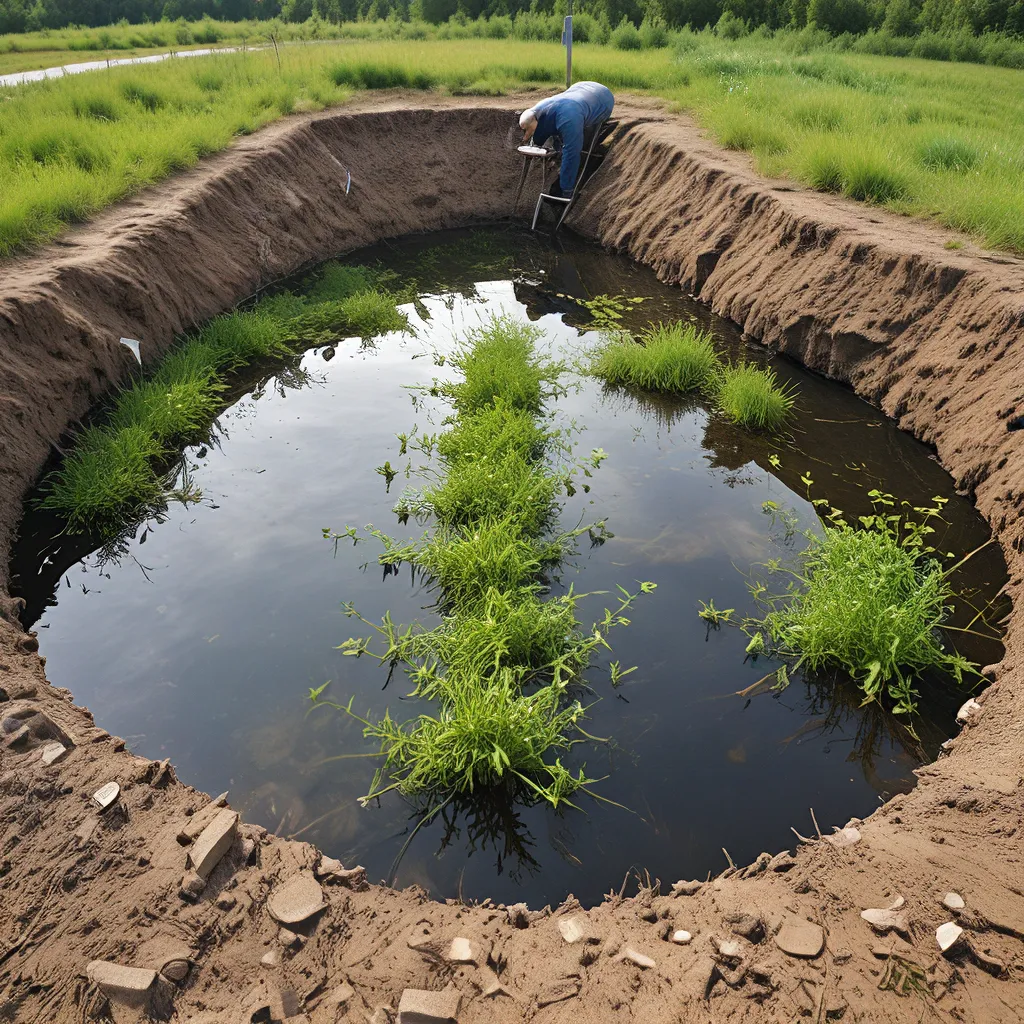
As an environmental enthusiast, I’ve always been fascinated by the incredible power of nature to heal itself. And when it comes to wastewater treatment, one technique that’s caught my eye is phytoremediation – the use of plants to clean up contaminated water. It’s like Mother Nature’s own version of a high-tech water purifier, and let me tell you, the potential is nothing short of mind-blowing.
Now, I know what you’re thinking – “Plants? In my wastewater? How’s that supposed to work?” Well, buckle up, my friends, because this is where things get really cool. See, certain plants have this uncanny ability to absorb and break down all sorts of nasty pollutants, from heavy metals to organic compounds. It’s like they’ve got superpowers or something!
The Incredible Cleaning Power of Plants
Take the humble willow tree, for example. Did you know it can suck up lead, cadmium, and zinc like nobody’s business? Or how about the water hyacinth – it’s a total rock star when it comes to removing nitrogen and phosphorus from wastewater. And let’s not forget about the common reed – it’s a pro at tackling industrial dyes and pesticides. It’s like these plants have their own personal waste management systems built right in!
But the real kicker is that phytoremediation doesn’t just clean the water – it can also rehabilitate the soil. See, as the plants break down those pollutants, they’re also releasing nutrients back into the earth, which can actually improve soil quality over time. It’s a win-win situation!
Phytoremediation in Action
Now, you might be wondering, “Okay, this all sounds great, but how does it work in the real world?” Well, let me tell you about a few real-life examples that’ll blow your mind.
Take the case of a wetland in Florida that was used to treat wastewater from a nearby citrus processing plant. The researchers found that the wetland plants were able to remove up to 90% of the nitrogen and phosphorus from the effluent, all while providing a natural habitat for local wildlife. It’s like a built-in water purifier and wildlife sanctuary all in one!
Or how about the phytoremediation project in China, where they used water hyacinths to clean up a heavily polluted river? The results were nothing short of astounding – the plants were able to remove over 80% of the heavy metals and significantly improve the water quality in just a few months. It’s like these plants are the secret superheroes of the natural world!
The Future of Phytoremediation
Now, I know what you might be thinking – “This all sounds great, but is it really a viable solution for large-scale wastewater treatment?” Well, the scientific consensus is a resounding yes. In fact, experts believe that phytoremediation could be a key player in the future of sustainable water management.
After all, it’s a natural, cost-effective, and environmentally friendly way to treat wastewater, and it doesn’t require any fancy chemicals or high-tech equipment. Plus, ongoing research is constantly uncovering new and more efficient plant species that can tackle an even wider range of pollutants.
And let’s not forget the potential for integration with other wastewater treatment methods. Imagine a hybrid system that combines the power of plants with the precision of traditional technologies – it’s like the ultimate one-two punch against water pollution!
Embracing the Power of Nature
So, there you have it, folks – the incredible potential of phytoremediation in wastewater treatment. It’s a natural, sustainable, and cost-effective solution that harnesses the incredible cleaning power of plants to tackle some of our most pressing environmental challenges.
And you know what? I think it’s high time we start embracing the power of nature to solve our problems. After all, Mother Nature’s been at this game for a lot longer than we have, and she’s got a few tricks up her sleeve that we’re only just beginning to understand.
So, the next time you flush the toilet or turn on the tap, take a moment to appreciate the hidden heroes working hard to keep our water clean – the humble plants that are quietly cleaning up our messes and making the world a better place, one drop at a time.
Who knows, maybe one day we’ll all be growing our own personal wastewater treatment systems in our backyards. Stranger things have happened, right? The future of water management is looking greener than ever, and I for one, can’t wait to see what Mother Nature has in store.